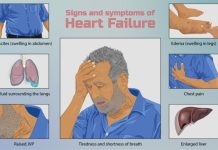Routine sero-surveillance of the population to estimate presence of antibodies to COVID-19 is required to understand the development of herd immunity in a population. Data from the sero-surveillance study of population in the Ischgl town of Austria throws light on this aspect and have led researchers to develop a prediction model which could help plan an effective vaccine strategy and non-invasive population interventions against the infection.
The data from Ischgl study demonstrated that approx. 42.4% of the population were sero-positive after 9-10 months of testing since first patients were exposed to the corona virus1,2. However, this requires the use of appropriate antibodies and the right target to ensure that individuals with mild infections are not missed3. This data from the Ischgl study suggests that the antibody response to COVID-19 is not only long lasting but can be a predictor of herd immunity in a population. This, in turn, necessitates the need for a routine sero-surveillance in a population to estimate the number of people who are antibody positive? Although this study may not be representative of the entire population, however, it can still help us in identifying, not only the sero-positive individuals, but indirectly leads to predicting the estimated population that would require a booster vaccine dose or not. This is of extreme importance at this moment, given the fact that vaccine administration against COVID-19 is in full swing in most countries and the world is waiting anxiously to return to the “normal life” that existed before COVID-19. This will enable the policy makers and administrators to develop guidelines and ensure adequate health care resources are spent towards the population where antibody development is minimal.
In addition, this study has also revealed the development of a non-invasive predictive model based on the self-assessment of three identified symptoms (cough, loss of taste/smell and limb pain) that could accurately predict the sero-positive individuals4 in a population that has been infected by coronavirus. Exploitation of such a non-invasive model can really be beneficial to the entire world to fight against the COVID-19 pandemic by predicting the sero-positiveness in the population.
Combining both these approaches of routine sero-surveillance and predictive modelling using CHES software5 to determine sero-positiveness, countries across the world can efficiently plan sero-surveillance studies that can help in controlling the pandemic by spending the tax-payers money more effectively and bringing normalcy back as soon as possible.
***
References:
- Ischgl: Antibodies only decreased slightly. Published online on 18 February 2021. Available at https://tirol.orf.at/stories/3090797/ Accessed on 19 February 2021.
- Innsbruck Medical University 2021. Press release – Ischgl study: 42.4 percent are antibody-positive. Available online at https://www.i-med.ac.at/pr/presse/2020/40.html Accessed on 19 February 2021.
- Are we underestimating seroprevalence of SARS-CoV2. BMJ 2020; 370 doi: https://doi.org/10.1136/bmj.m3364 (Published 03 September 2020)
- Lehmann, J., Giesinger, et al., 2021. Estimating seroprevalence of SARS-CoV-2 antibodies using three self-reported symptoms: Development of a prediction model based on data from Ischgl, Austria. Epidemiology and Infection, 1-13. Published online by Cambridge University Press: 18 February 2021. DOI: https://doi.org/10.1017/S0950268821000418
- Holzner B, Giesinger JM, Pinggera J, Zugal S, Schöpf F, Oberguggenberger AS, Gamper EM, Zabernigg A, Weber B, Rumpold G. The Computer-based Health Evaluation Software (CHES): a software for electronic patient-reported outcome monitoring. BMC Med Inform Decis Mak. 2012 Nov 9; 12:126. doi: https://doi.org/10.1186/1472-6947-12-126.
***




































